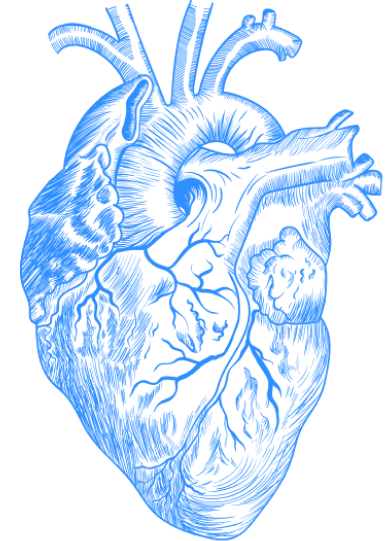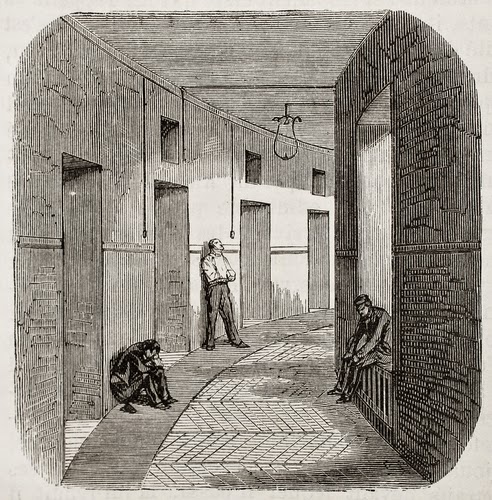
O Rose thou art sick. The invisible worm, That flies in the night In the howling storm:
— William Blake, “The Sick Rose”
Has found out thy bed Of crimson joy: And his dark secret love Does thy life destroy.
As I rotate through psychiatry, I have noticed that certain facial features and dispositions uniquely characterize diseases. I wrote this in a previous post about a depressed patient:

Shutterstock
I need not speak to him to know he is not well. A simple glance tells me all. The patient’s unshaven face wears no smile and, at once, no frown. His vapid gaze lingers longer than it should on various objects or people or nothing at all…. His visage is neither pale nor tan nor some variation on one of these — it is like a bare tree on a late and chilly fall day. His brow barely responds even when he speaks and his susurrant replies to our questions are scarcely audible over the ambient sounds in the room.
Much of this description also applies to a schizophrenic patient whom I saw, a young adult in his twenties whose life had been thrown into disarray by psychiatric disease. But there are some differences. The schizophrenic patient was far more active than the depressed patient, rocking back and forth the way some Orthodox Jews shuckle when they pray. And while his façade was inexpressive, we could tell when speaking with him that his mind was as active as ever. He stared, not lazily or vapidly, but intensely, as if analyzing each of our movements and expressions.
The hospital staff had taken the shoelaces out of his sneakers so he could not use them to strangle himself. He was not allowed to shave with a razor because of the risk of suicide. Not being able to grow a full beard, a five o’clock shadow grew only over his upper lip. His fingernails were cut and neatly blunted (again, a safety measure) and he had been wearing the same clothes for weeks. When he did get up, he simply paced around the psychiatric unit, occasionally muttering to himself as he stared at the ground. He ignored everyone else around him even though many of the other patients were manic, depressed, or bombastic. He believed that aliens were coming down from outer space and putting thoughts into his head; other ghost-like creatures told him to do “violent things” to himself. As he rocked back and forth he seemed to be entreating the voices to go away.
It is tempting when hearing descriptions like this to laugh. The claims are so absurd and so beyond the realm of normalcy that they drag us into the land of poorly made sci-fi movies. However, patients with schizophrenia sincerely believe in these sorts of delusions and hallucinations.
Schizophrenia usually occurs in younger adults and involves paranoid delusions, hallucinations (mostly auditory), social withdrawal, disorganized speech and other symptoms. Here is a video of a schizophrenic patient which gives a sense of the illness. The voices which patients hear demand, in many cases, that the patient hurt himself, leading eventually to suicide (the voices more rarely implore the patient to hurt others). Patients have no control over these and don’t comprehend that they are fictitious. These victims are secluded from reality and trapped by their minds.
The pathophysiology of this disease, as is true of depression, is not completely clear. But we do know that patients have an unusually increased amount of dopamine within the brain. Additionally, the brains of persistent schizophrenics shrink and the ventricles of the brain, which contain cerebrospinal fluid, enlarge. The etiology of schizophrenia is also complex, with genetic and environmental factors both presumably playing a role.

Shutterstock
The prognosis can be devastating. In this case, a young adult in the middle of a budding career in academia could no longer work, attend university, or interact with fellow human beings. Fearful of violent outbursts his family had no choice but to place him in a psychiatry ward. According to the numbers, this is not a singular outcome. Only 15 percent of patients with the diagnosis eventually function again at their pre-illness level, while one third are severely and permanently debilitated. About 80 percent of patients with schizophrenia at some point in life also experience major depression, and substance abuse plays an important role in about 50 percent of patients.
The prognosis is not necessarily better for those who take antipsychotic medications, which block dopamine receptors in the brain. The treatments themselves can affect the patient negatively. Side effects from antipsychotic medications like Olanzapine, Chlorpromazine, Clozapine, and Risperidone include diabetes, decreased white blood cell counts, myocarditis (inflammation of the heart), tic-like movements, sedation, and neuroleptic malignant syndrome (a syndrome consisting of fever, altered mental status, and muscle rigidity). No wonder, then, that patients frequently dislike taking their medications.
The patient we saw on the psychiatry ward did not respond to any of these pharmaceutical options. In fact, no matter what medication he took, the voices continued to haunt him, telling him to do terrible things to himself. In an act of desperation we turned to electroconvulsive therapy (ECT, which I wrote about here). After the first couple of treatments, the patient improved slightly. But the illness quickly came roaring back. The attending physician proposed other combinations of medical therapies and more ECT. But at this point, we persevered in searching for treatments only to delay lifelong institutionalization and a helpless retreat to a dark world of nightmares.

Being locked out of your mind is akin to death itself. It is as if there is a mechanism inside your brain, but the gears are either stuck completely or are working improperly. And you are aware of it, perhaps even aware of that it can be fixed, or that you can find an appropriate exit, a door which leads to a better life. Maybe you even have the key but you have no idea what the object is, let alone its purpose.
I wonder how much would, for example, logotherapy help in treatment of schizophrenia. I am not against meds but it only turns patients into zombies and that is not a workable treatment (particularly for patients that have high cognitive ability and need to do rigorous intellectual work). Maybe for some there is no exit, and to a physician who is trying to heal the suffering human being, I am sure that is an awful feeling and reality.